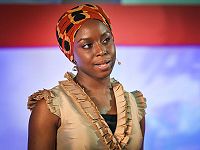The Link Between Invention and Memory
From DigitalRhetoricCollaborative
Contents |
[edit] Introduction
Rhetoric has historically been divided into five canons: invention, arrangement, style, memory, and delivery. More specifically, invention concerns finding something to say, in other words, determining what the author will communicate [1]. Memory goes beyond the ability to memorize a speech as it incorporates the process of storing up commonplaces having to do with the topic of conversation [2]. In cultural rhetoric, the two are commonly linked by the idea that memory shapes invention. A rhetor must rely on Collective Memory, the beliefs that are shared within a certain culture, in order to comprehensibly appeal to the audience. This connection between invention and memory determines the messages that can be shared and the messages that cannot, because some people have historically been excluded from the rhetorical sphere (i.e. women, African-Americans, etc.) [3]. This exclusion of certain bodies from rhetoric has called many cultural rhetorics into formation.
[edit] Artifact Analysis
The Danger of a Single Story: Chimamanda Ngozi Adichie
TedTalk Video: http://www.ted.com/talks/chimamanda_adichie_the_danger_of_a_single_story?language=en
TedTalk Transcript: http://www.ted.com/talks/chimamanda_adichie_the_danger_of_a_single_story/transcript?language=en
Chimamanda Ngozi Adichie was born in 1977 in Enugu, Nigeria. Her father worked at the University of Nigera in Nsukka as a statistics professor and became Deputy Vice-Chancellor of the University. Her mother was the first woman registrar of the University of Nigeria. Chimanada Adichie completed her education at the University’s school and later studied medicine and pharmacy there for a year and a half. At the age of nineteen, she went to the United States, where she attended Drexel University in Philadelphia, Pennsylvania and Eastern Connecticut State University in Willimantic, Connecticut to earn degrees in communication and political science. She then received her masters in creative writing at John Hopkins University in Baltimore, Maryland. Adichie earned a masters in African Studies from Yale University in 2008 and was a Hodder Fellow at Princeton University in Princeton, New Jersey from 2005 to 2006. She now divides her time between the United States and Nigeria and has written novels about her life and her experiences in both countries [4].
Chimamanda Adichie opens her TedTalk with an anecdote about her introduction to literature, which consisted of children’s stories based on British characters living in the United Kingdom. She, consequently, became obsessed with white skin, blue-eyes, apples, and ginger beer, items that were not present in her life in Nigeria. The books she read as a child led her to believe that the only characters allowed within literature were white characters. At the age of seven, when she began to write, she invented characters that more closely resembled the children from the United Kingdom rather than children she grew up with in Nigeria. However, as she grew older, she shifted toward writing about African girls with “skin the color of chocolate… [and] kinky hair” [5]. Chimamanda Adichie developed an increased awareness of her Nigerian culture and immersed herself within it by reading more African literature. In other words, her writing developed to encompass this new understanding of her collective memory.
Chimamanda Adichie’s TedTalk also explains the “danger of a single story,” which means the danger of allowing stereotypes to shape one’s understanding of the world or a group of people. In rhetoric, when certain populations are excluded from the rhetorical sphere, a single story emerges, constraining what an audience expects from the rhetorical sphere. Historically, this story involves Aristotle and the five canons; however, when looked at through the lens of different cultures and through the idea that collective memory shapes peoples’ ideas, this single story of rhetoric can be broadened to include diverse ideas and populations. Adichie shares her experience working with individuals who have been excluded from the rhetorical sphere in the past and, yet, are eager to share their stories. She acknowledges the fact that possessing the ability to tell one’s story can empower and humanize and she looks to foster an environment where this is possible. Recognizing the link between invention and memory will allow future audiences and rhetors to be more inclusive and understanding of others’ ideas and the experiences that have shaped these ideas. In her speech, Adichie states that by rejecting the idea of a single story, “we regain a kind of paradise” [6]. If the same single story of rhetoric can be disbanded, the rhetorical sphere will grow to become more inclusive of all bodies and, previously, unheard messages.
[edit] Additional Resources
“About Americanah.” Chimamanda Adichie. 2007-2015. Web. 29 Apr. 2015. <http://chimamanda.com/books/americanah/>
Blair, Carol. "Communication as Collective Memory: Perspectives on Theory." (2006): 51-9. Print.
Clark, Irene L. "Concepts in Composition: Theory and Practice in the Teaching of Writing." : 71-81. Print.
“We should all be feminists | Chimamanda Ngozi Adichie | TedxEuston.” Youtube. 12 Apr. 2013. Web. 29 Apr. 2015. <https://www.youtube.com/watch?v=hg3umXU_qWc>
[edit] References
- ↑ Burton, Gideon O., and Silva Rhetoricae. "The Canons of Rhetoric."Web. <http://rhetoric.byu.edu/canons/Canons.htm>.
- ↑ Burton, Gideon O., and Silva Rhetoricae. "The Canons of Rhetoric."Web. <http://rhetoric.byu.edu/canons/Canons.htm>.
- ↑ Ede, Lisa, Cheryl Glenn, and Andrea Lunsford. "Border Crossings: Intersections of Rhetoric and Feminism." Rhetorica: A Journal of the History of Rhetoric 13 (1995)Print.
- ↑ Tunca, Daria. "The Chimamanda Ngozi Adichie Website: Biography."Web. <http://www.l3.ulg.ac.be/adichie/cnabio.html>
- ↑ “Chimamanda Adichie: The Danger of a Single Story.” Youtube. 7 Oct. 2009. Web. 23 Sept. 2014. <http://youtu.be/D9Ihs241zeg>
- ↑ “Chimamanda Adichie: The Danger of a Single Story.” Youtube. 7 Oct. 2009. Web. 23 Sept. 2014. <http://youtu.be/D9Ihs241zeg>

